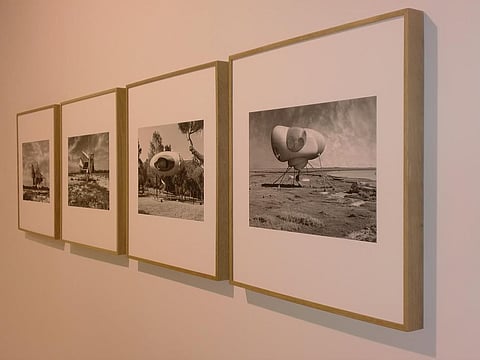
- Home
- न्यूजग्राम
- NewsGram USA
- India
- World
- Politics
- Entertainment
- Culture
- Lifestyle
- Economy
- Sports
- Sp. Coverage
- Misc.
- NewsGram Exclusive
- Jobs / Internships

Panaji, December 20, 2016: A photograph not only captures a moment in time but also freezes it for generations to come. When looked at years after, they can remind us of people, events, and a world that has come to last.
Towards this, one family's albums from the late 19th and the 20th century encapsulates the Goan diaspora's experience through photographs from various geographical clusters.
The photographs are on display at the ongoing Serendipity Arts Festival in a nostalgic exhibition, "Old Homes, New Homelands", tracing the Goan migrations through the photo albums of the Ribeiro de Santa family.
NewsGram brings to you latest new stories in India.
Curated by Prashant Panjiar, it is based on the private collection of Arminio Ribeiro, who has been collecting family photographs as various branches of his family spread out across the world.
Panjiar said that the migrations of Goans started as early as the 16th century but gained momentum only after the British saw that there were educated people in Goa who could be hired to work in the railways and their other colonies.
"Ahead of the migration, clerical members and missionaries had travelled far and wide and with them they carried stories of new lands, opportunities and established a network that helped in migration," Panjiar, who has served on the jury of the World Press Photo Awards, told IANS.
Explaining the history of migrations from Goa, Panjiar said: "In the period between the 16th and 19th centuries, educated Goans served in lower- to middle-level administration and accounting jobs in Goa and other Portuguese colonies. Those seeking to engage in commerce and trade migrated to British India and Africa where they set up small enterprises."
Go to NewsGram and check out news related to political current issues
"The opening of a school for western medicine in 1842 in Goa resulted in some Goans adopting the profession. Many of them remained unemployed here but their training in tropical medicine placed them at an advantage for jobs in other Portuguese colonies. So again, this opened the doors for migration from Goa," Panjiar added.
The exhibition is a unique attempt to highlight an issue as complex as migration from the albums of one single family. The members of the Riberio family, who have settled in various countries, aptly represent the Goan migrations through the ages.
Arminio Ribeiro's son Servito Ribeiro completed his medical studies from Porto University, married a Portuguese pianist and settled in Portugal. Arminio's wife, Guiomar, had four brothers who travelled to Quelimane and later to Lorenco Marques in Mozambique and engaged in business. Only one of the four returned to Goa while the remaining three followed their children who were educated and settled in Portugal.
Arminio's daughter, Ida Ribeiro, married Pakistani doctor Orfino De Sa and settled in Karachi. They had six children of whom the three older girls travelled to England for higher education. The other three stayed in Karachi and finished their education from the port city. They too are now settled in the UK, Canada and Brazil.
Look for latest news from India in NewsGram.
Two of Arminio's other children, Rui and Alfredo, studied engineering in Poona University and while the former returned to Goa, the latter worked first in the railways and later taught in Bombay (now Mumbai). He had six children, of whom one son, a doctor, migrated to England; another son, a scientist, migrated to the US and the third, a daughter, settled in Canada.
Similarly, across generations, the various members of the Ribeiro family have migrated to several other parts of the world and the photographs that were once clicked to capture the moment are now serving as both a visual delight and a tool for exhibiting Goan migrations. (IANS)
